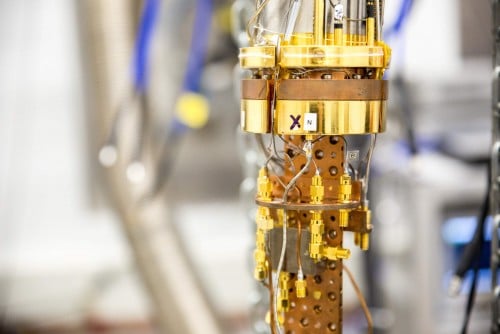Science
Researchers Connect Time Crystals to Enhance Quantum Computing

Researchers at Aalto University have achieved a groundbreaking milestone by connecting a time crystal to an external system for the first time. This advancement opens new avenues for enhancing the performance of quantum computers and sensing technologies. The study, led by Academy Research Fellow Jere Mäkinen, was published in Nature Communications on October 16, 2023.
Understanding Time Crystals
A time crystal is a unique quantum system that maintains perpetual motion without requiring external energy. The concept was first introduced by Nobel Laureate Frank Wilczek in 2012, suggesting that certain quantum systems could self-organize in a time-based manner rather than spatially. Time crystals were experimentally confirmed in 2016, but the recent work at Aalto University marks a significant leap forward.
The research team transformed a time crystal into an optomechanical system, potentially paving the way for the development of highly accurate sensors and memory systems for quantum computers. Mäkinen emphasized the significance of this connection: “Perpetual motion is possible in the quantum realm so long as it is not disturbed by external energy input, such as by observing it.” This principle had previously prevented the connection of a time crystal to any external system.
Methodology and Findings
To facilitate their experiment, the researchers used radio waves to introduce magnons into a Helium-3 superfluid, cooled to near absolute zero. Magnons are quasiparticles that behave like individual particles, enabling the creation of a time crystal that maintained motion for up to 10^8 cycles or several minutes. As the system gradually faded, the time crystal established a connection with a nearby mechanical oscillator, influenced by the oscillator’s frequency and amplitude.
Mäkinen noted, “We showed that changes in the time crystal’s frequency are completely analogous to optomechanical phenomena widely known in physics.” This discovery aligns with established methods used in detecting gravitational waves, such as at the Laser Interferometer Gravitational-Wave Observatory in the U.S.
The potential applications of time crystals are vast. They could dramatically enhance the performance of quantum computing systems, as Mäkinen explained: “Time crystals last for orders of magnitude longer than the quantum systems currently used in quantum computing. The best-case scenario is that time crystals could power the memory systems of quantum computers to significantly improve them.” Furthermore, they could serve as frequency combs in high-sensitivity measurement devices.
The research was conducted at the Low Temperature Laboratory, part of OtaNano, Finland’s national research infrastructure dedicated to nano, micro, and quantum technologies. This achievement not only illustrates the innovative capabilities of the Aalto University team but also signals a promising future for quantum technologies.
-

 Science1 week ago
Science1 week agoResearchers Challenge 200-Year-Old Physics Principle with Atomic Engines
-

 Politics1 week ago
Politics1 week agoNHP Foundation Secures Land for 158 Affordable Apartments in Denver
-

 Health1 week ago
Health1 week agoNeuroscientist Advocates for Flag Football Until Age 14
-

 Health1 week ago
Health1 week agoFDA Launches Fast-Track Review for Nine Innovative Therapies
-

 Lifestyle1 week ago
Lifestyle1 week agoLongtime Friends Face Heartbreak After Loss and Isolation
-

 Business1 week ago
Business1 week agoMaine Housing Inventory Surges to Post-Pandemic High
-

 Politics1 week ago
Politics1 week agoIsraeli Air Strikes in Lebanon Kill One, Wound Seven Amid Tensions
-

 World1 week ago
World1 week agoTroops to Enjoy Buffalo Chicken, Thai Curry in 2026 MREs
-

 Top Stories1 week ago
Top Stories1 week agoUnforgettable Moments: The Best Victoria’s Secret Performances
-

 World1 week ago
World1 week agoGlobal Military Spending: Air Forces Ranked by Budget and Capability
-

 Politics1 week ago
Politics1 week agoMassachusetts Lawmakers Resist Audit After Voter Mandate
-

 Business1 week ago
Business1 week agoSpirit Airlines Cuts Workforce with Furloughs for 365 Pilots









